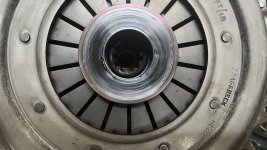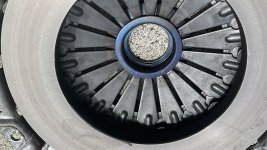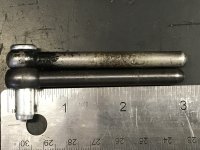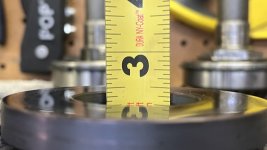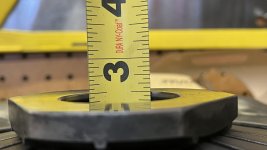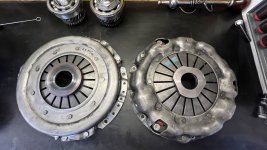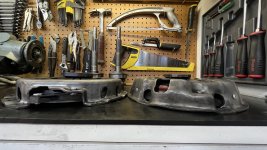AUSMHLY
Yoda
Offline
Hello all, BJ8.
I don't have any freeplay at the clutch pedal. Could this cause problems at the clutch assembly?
The new clutch release plate is heating up and turning blue. (photo attached, less then 100 miles) The throw out bearing is wearing too much.
I've installed a new clutch assembly, throw out bearing, new fork bushes, new stainless steel slave hose, new slave cylinder and master cylinder.
The clevis pin is in good shape as is the hole in the pedal arm. Very little free play
The only pedal free play movement is with the clevis pin. Should the pedal have more freeplay then that?
I'm assuming the throw out bearing is under more pressure with the release plate then it should have.
I am not riding the clutch. Please look at the plate, it doesn't show any wear. The release plate is blue.
I don't have any freeplay at the clutch pedal. Could this cause problems at the clutch assembly?
The new clutch release plate is heating up and turning blue. (photo attached, less then 100 miles) The throw out bearing is wearing too much.
I've installed a new clutch assembly, throw out bearing, new fork bushes, new stainless steel slave hose, new slave cylinder and master cylinder.
The clevis pin is in good shape as is the hole in the pedal arm. Very little free play
The only pedal free play movement is with the clevis pin. Should the pedal have more freeplay then that?
I'm assuming the throw out bearing is under more pressure with the release plate then it should have.
I am not riding the clutch. Please look at the plate, it doesn't show any wear. The release plate is blue.
Attachments
Last edited:

 Hi Guest!
Hi Guest!

 smilie in place of the real @
smilie in place of the real @
 Pretty Please - add it to our Events forum(s) and add to the calendar! >>
Pretty Please - add it to our Events forum(s) and add to the calendar! >> 
